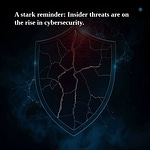Operation PowerOFF: The Crackdown on DDoS-for-Hire Services
Exploring the impact of international efforts to dismantle cybercriminal networks threatening our digital safety.
In today’s digital landscape, where organizations increasingly rely on online services, the threat of Distributed Denial of Service (DDoS) attacks has never been more pressing. These malicious attacks not only jeopardize service availability but also undermine the integrity and trustworthiness of essential platforms. Recently, international law enforcement agencies launched Operation PowerOFF, striking a significant blow against DDoS-for-hire services. Let’s dive into the mechanics of these cybercriminal operations and what their disruption means for cybersecurity.
Understanding DDoS Attacks: The Mechanics
DDoS attacks flood targeted servers with excessive traffic, rendering them unusable for legitimate users. The rise of DDoS-for-hire—often dubbed DDoS-as-a-Service (DaaS)—has democratized these cyber assaults, making them accessible even to those with minimal technical know-how.
In May 2025, Europol announced a coordinated assault on six notorious platforms: Cfxapi, Cfxsecurity, Neostress, Jetstress, Quickdown, and Zapcut. This operation involved arrests in Poland and domain seizures in the United States, showcasing a united front against cybercrime.
The Rise of Booter Services
Booter or stresser services operate on a deceptively simple premise. Users can: - Select an IP address to target - Choose from various attack vectors - Pay a nominal fee—sometimes as low as €10—to initiate the assault.
What distinguishes these platforms is their user-friendly interfaces, which mimic legitimate services, reducing the barrier to entry for potential criminals.
The Evolution of DDoS Attack Methodologies
These services rely on centralized infrastructures instead of traditional botnets, allowing them to execute attacks with remarkable efficiency and precision. Recent trends indicate a shift towards hybrid attack strategies that merge dedicated server attacks with botnet operations. Key developments include: - Advanced features like packet fragmentation - A broader array of attack types
This evolution mandates continuous adaptation and vigilance from cybersecurity professionals who are on the frontline of these fast-evolving threats.
Operation PowerOFF: A Game Changer
The strength of Operation PowerOFF lies not just in its execution but in the international collaboration that underpinned it. Law enforcement agencies from Poland, the United States, Germany, and the Netherlands worked together to dismantle these notorious DDoS platforms.
Intelligence Sharing and Legal Actions
Operation PowerOFF leveraged collected data from confiscated infrastructures to identify network operators and their clients. In an innovative approach, Dutch authorities even developed fake booter services to deter would-be buyers, highlighting proactive strategies to reduce demand for such illegal services.
This operation sends a clear message: engaging with DDoS-for-hire services could lead to criminal charges, reinforcing the importance of public education about the risks associated with these platforms.
The Broader Implications of DDoS Disruption
The significance of dismantling DDoS-for-hire services extends beyond immediate operational impacts. The repercussions of DDoS attacks can ripple across an organization’s reputation, customer trust, and bottom line. As businesses increasingly pivot to digital infrastructures, it becomes imperative to recognize this evolving threat landscape.
Looking Ahead: What’s Next?
While Operation PowerOFF marks a pivotal victory in the fight against cybercrime, it also serves as a reminder that the tactics employed by cybercriminals will continue to evolve.
Enterprise leaders and cybersecurity professionals must: - Stay updated on emerging threats - Invest in cybersecurity training and awareness - Foster international collaboration to tackle such global threats
Conclusion
The disruption of DDoS-for-hire platforms is a crucial step in safeguarding our digital ecosystems. As we navigate this complex venture, continuous cooperation among international law enforcement and organizations is vital to curtail the threats posed by sophisticated cybercriminals. By acknowledging the evolving nature of these attacks and remaining vigilant, we can fortify our defenses against one of the most disruptive threats in today's cyber landscape.
Act Now: Join the Conversation!
What do you think about the international efforts to combat DDoS attacks? Have you ever encountered DDoS threats in your own work? Share your thoughts in the comments below, or hit that subscribe button to stay updated on all things cybersecurity!











Share this post